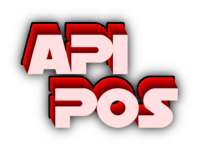
Incorporating Microsoft Word Features into Your Web Application: A Developer’s Guide
Incorporating Microsoft Word Features into Your Web Application: A Developer’s Guide
In today’s digital landscape, the ability to create web applications with rich text editing and document management functionalities akin to Microsoft Word can significantly enhance user experience. For developers, the goal is to provide a familiar editing interface that users can access anytime and anywhere. This guide outlines the essential steps and considerations for integrating Microsoft Word-like features into your web app.
Understanding the Essentials
Before you start on the technical side, it’s crucial to recognize what makes Microsoft Word a preferred choice for document editing:
- Rich Text Editing: Options for bolding, italicizing, underlining, and varying font sizes and types.
- Document Formatting: Features for aligning paragraphs, managing indentation, creating lists, and controlling spacing.
- Media Integration: The ability to insert images, tables, and other media elements.
- Collaboration Tools: Support for features like tracked changes, comments, and real-time co-authoring.
- Storage and Retrieval: Efficient management of saving, opening, and organizing documents.
Choosing the Right Development Approach
You have several options to incorporate Word functionalities into your web app:
- Building from Scratch
- This method provides complete control but can be time-consuming and costly.
- Pros: Customizable to specific needs and allows for unique branding.
- Cons: Long development time and ongoing maintenance responsibilities.
- Using a Rich Text Editor Library
- Various libraries are available to facilitate component integration and documentation.
- Pros: Quick implementation with community support and regular updates.
- Cons: Limited customization options and reliance on third-party code.
- Implementing a Docx Editor
- A Docx editor is essential for managing .docx file formats, the standard for Microsoft documents since 2007.
- Pros: Rich text editing features, maintains .docx compatibility, supports real-time collaboration, and is self-contained.
- Cons: Potential performance issues and licensing costs.
- Integrating Office 365 and Microsoft Graph API
- This option offers extensive compatibility and rich features through Microsoft’s services.
- Pros: A consistent experience for users familiar with MS Word, access to collaboration tools, and enhanced scalability and security.
- Cons: Subscription costs for Office 365 and possible privacy concerns.
Step-by-Step Integration Process
- Determine Required Features: Decide on the level of Word-like functionality needed—basic formatting or more advanced features.
- Choose Your Development Path: Based on your requirements, select whether to build from scratch, utilize an existing library, or integrate Microsoft services.
- Design the User Interface: Create an interface that mirrors the familiar MS Word layout for ease of use.
- Set Up Server Infrastructure: Establish backend capabilities for document storage, retrieval, and possibly real-time collaboration.
- Library Integration: If using a library, follow its documentation to embed the editor into your app. For Microsoft services, implement authentication through the Microsoft Graph API and relevant endpoints.
- Ensure Security: Focus on security measures such as encryption, access control based on user roles and locations, regular audits, and compliance with data protection standards.
- Conduct Thorough Testing: Test across various browsers and devices, including usability assessments.
- Deploy and Monitor: Launch the new features and closely monitor their performance.
Best Practices
- Performance Monitoring: Be aware that rich text editors can impact page load times.
- Mobile Optimization: Ensure the editor is fully functional on mobile devices.
- User Training: Develop resources to assist users in maximizing the new features.
- Accessibility Compliance: Ensure the text editor is usable for individuals with disabilities.
- Regular Updates: Frequently update your editor to introduce new features and security enhancements.
Conclusion
Adding Microsoft Word functionalities to your web application can significantly improve user productivity and engagement. Whether you choose to develop from the ground up, leverage existing libraries, or integrate Microsoft services, careful planning and execution are crucial for success. Following the outlined steps will enable you to implement robust document editing and management tools within your web app.

